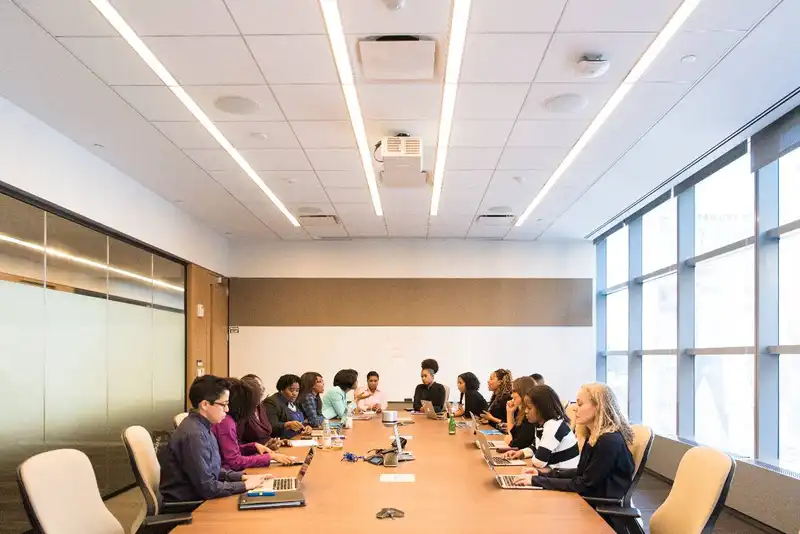What is Employee Life Cycle Model ?
An employee life cycle model is the journey that an individual experiences during their employment at a company.
The 6 Stages of Employee Life Cycle Model
What is the Employee Life Cycle Model?
The employee life cycle model encompasses all the stages that a staff member of a company experiences throughout their employment. This entails from when they are aware of an organization to when they are hired to when they leave. Businesses will map out their employee journey to visualize how their team members engage with the company.
Also known as ELC, the model provides valuable insight into how the organization can improve its recruitment strategy and decrease high turnover rates. The employee life cycle can also highlight best practices that employers can implement to retain their staff members and build a high-performing workplace environment. Other advantages of understanding the employee life cycle model are improving company reputation, effective resource allocation, and minimize hiring costs.
6 Stages of the Employee Life Cycle Model
Organizations may have unique employee life cycles, depending on their structure and workforce management. However, there are 6 core stages that all models encompass. In detail, they include the following.
1. Attraction

The employee journey begins with attracting top talent to an organization. Business owners need to establish a positive and valuable employer brand to entice motivated and skilled applicants. Some ways to do so include the following.
- Boost brand awareness - Leaders of the organization can attend industry conferences and job fairs to build their brand and showcase why they are a great place for employees to work.
- Create a company culture - A company culture that values the needs of employees and is in tune with current events and trends will attract top talent.
- Offer competitive salaries and benefits - People want to work with a company that fairly and competitively compensates their employees.
2. Recruitment
After the attraction stage, organizations can begin recruiting employees to join the business. Generally, this step occurs when there is a vacant role in the company or when a new position is established. It is important that hiring managers are diligent in finding the person that has the skills and experiences that most align with the job. Best practices for an effective recruitment process include the following.
- Ask for employee referrals - Current employees and business leaders may have insight as to who are top members of the industry and who would work well within the company.
- Utilize social media - Companies can recruit applicants via social media platforms, such as LinkedIn and Twitter.
- Ensure specificity - When drafting job listings during the recruitment process, hiring managers should create comprehensive descriptions detailing necessary responsibilities and skills. This will help the team source talented and well-aligned individuals.
3. Onboarding
The onboarding process of the employee journey is when an individual is recruited onto the team and human resources help them get adjusted to the workplace environment. Generally, the new employee will receive training material, attend workshop sessions, and meet with employees at the company. This allows them to become familiar with the skills, behaviors, and expectations they need to meet in order to work seamlessly and productively.
4. Development

After the onboarding process, the fourth stage of the employee life cycle model is employee professional development. During this phase, employers must help their staff members build their skills and identify career path goals. Some best practices that business managers can provide their employees include the following.
- Encourage learning - Companies can have skills workshops, seminars, or tuition funding to motivate employees to further their education.
- Plan with employees - Human resources can have one-on-one meetings with their staff members to help them identify their key skills and expertise. Together, they can then plan out how the employee can further develop those skills.
- Reward employees - Organizations should reward staff members who are using their personal time to develop professionally and personally. This will show that the company acknowledges and appreciates the effort.
5. Retention
The retention stage is when companies focus their time and resources on keeping their high-performing employees. A common retention strategy is ensuring employees are happy in the company by building a supportive company culture. Other ways to retain employees include boosting employee engagement, training managers, asking for feedback, incentivizing good work, and having open communication.
6. Separation

The last stage of the employee life cycle is separation, which is when a staff member exits the company. This is oftentimes due to retirement, new employment opportunities, or personal reasons. Organizations need to make sure that employee separations are fair and smooth, regardless of the cause of their leave. Various separation processes include conducting exit interviews, assisting current teams with the transition, and remaining positive.
Key Takeaways for Employee Life Cycle Model
- The employee life cycle model refers to the journey an employee goes through during their employment at a company.
- Also known as ELC, the model provides insight into how an employee engages with an organization.
- Managers that understand their employee journey will be able to improve employee retention and cut costs.
- The six stages of the employee life cycle model include attraction, recruitment, onboarding, development, retention, and separation.



